What are fossils? Often described as Earth’s “time capsules,” fossils are preserved fragments of life developed naturally millions of years ago. Each bone, imprint, or shell offers a silent proof of the ancient ecosystems, capturing things and moments long before humans walked the planet. For scientists, these fossils even unlock some evolutionary secrets; for the public, they ignite wonder about life’s distant past. So, let’s explore how these fossils bridge the gap between mystery and knowledge, helping to understand the Earth’s history.
What are Fossils?
As you are looking for the answer to what fossils are, these are remains or traces of ancient life that have been preserved for more than 10,000 years and have been further developed by natural processes. From tiny seashells to vast skeletons, imprints, and trails, fossils allow for tracing the organisms from past geologic ages. However, studying these preserved remains of life makes it possible to learn about the Earth millions of years ago.
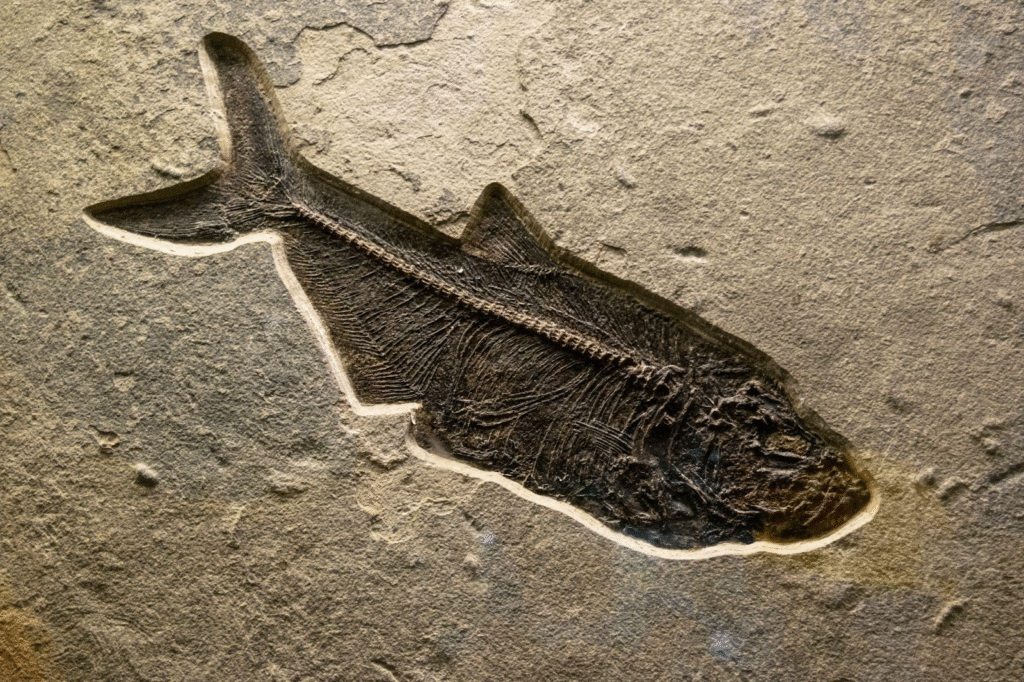
How are Fossils Formed?
How are fossils formed? It is a complex process that requires some specific conditions and circumstances to preserve the remains of the organisms properly. Fossils are typically formed following a process of fossilization. Let’s take a detailed look at how fossils are formed:
- Death and Burial:
The death of a living organism is the first step of fossil formation, and for fossilization to happen, the remaining organism needs to be quickly buried under sediment. Sand, mud, or volcanic ash could be the sediment that slows the decomposition process.
- Sediment Accumulation:
Over time, more sediment forms above the buried remains, compressing the layers. This pressure helps to preserve the remaining, and the sediment slowly turns into rock.
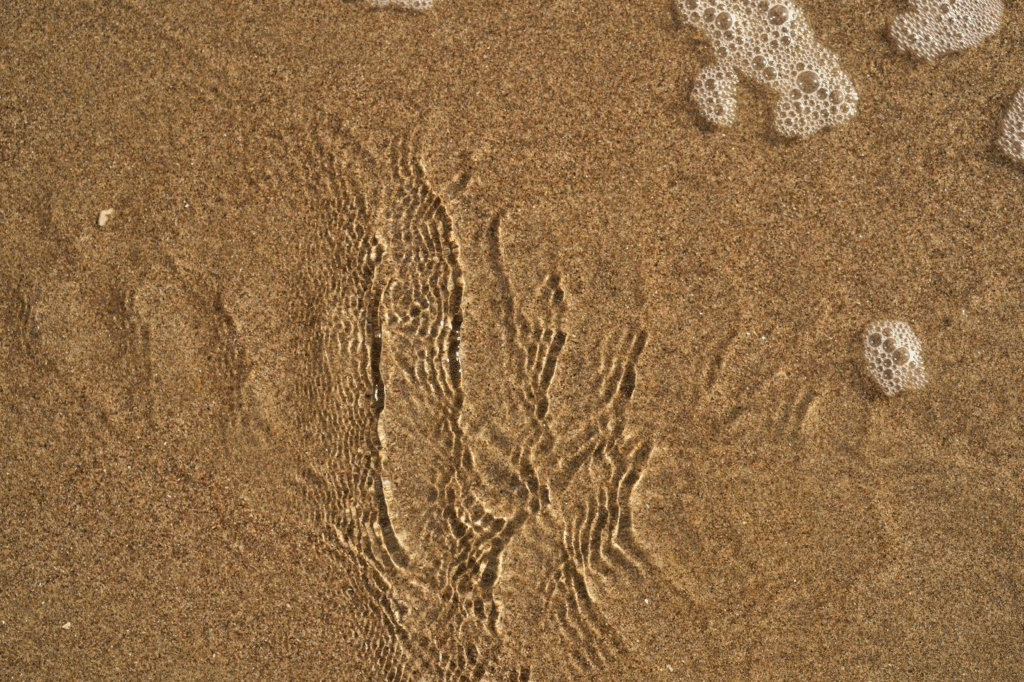
- Mineral Replacement:
When the remains started to be buried deeper, the mineral-rich groundwater gradually flowed to the bones or shells. Slowly, it replaces the organic material, turning the remains into hard stone.
- Mold and Cast Formation:
In the steps of how are fossils formed, mold and cast formation is also a vital part. Once the organism dissolves fully, it creates a mold surrounding the rock, creating a three-dimensional representation.
What are the Types of Fossils?
The types of fossils are classified into a few categories providing insights and detailed information about the origin of life and history. However, the primary categories of fossils are:
- Body Fossils:
These are actual body parts of different organisms that get fossilized, such as bones, teeth, and even shells. These directly give an idea of an organism’s physical characteristics.
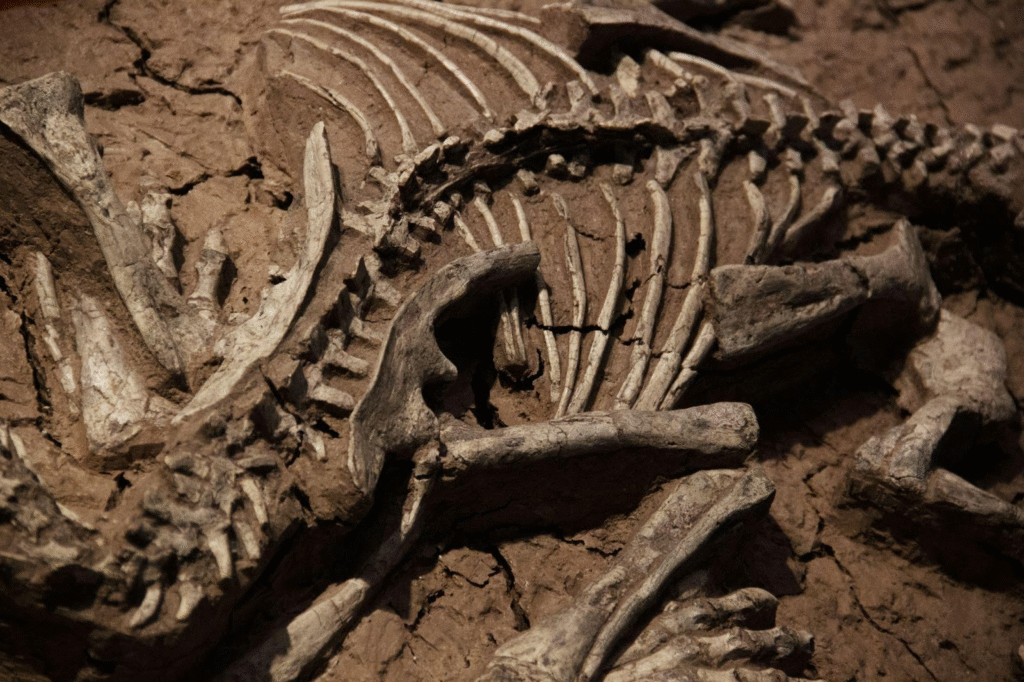
Example: Dinosaur bones are an ideal example of body fossils that give a proper idea of these ancient creatures.
- Trace Fossils:
These are also known as ichnofossils, capturing the evidence of an organism’s activities. Such might be footprints or burrows, rather than a physical form.
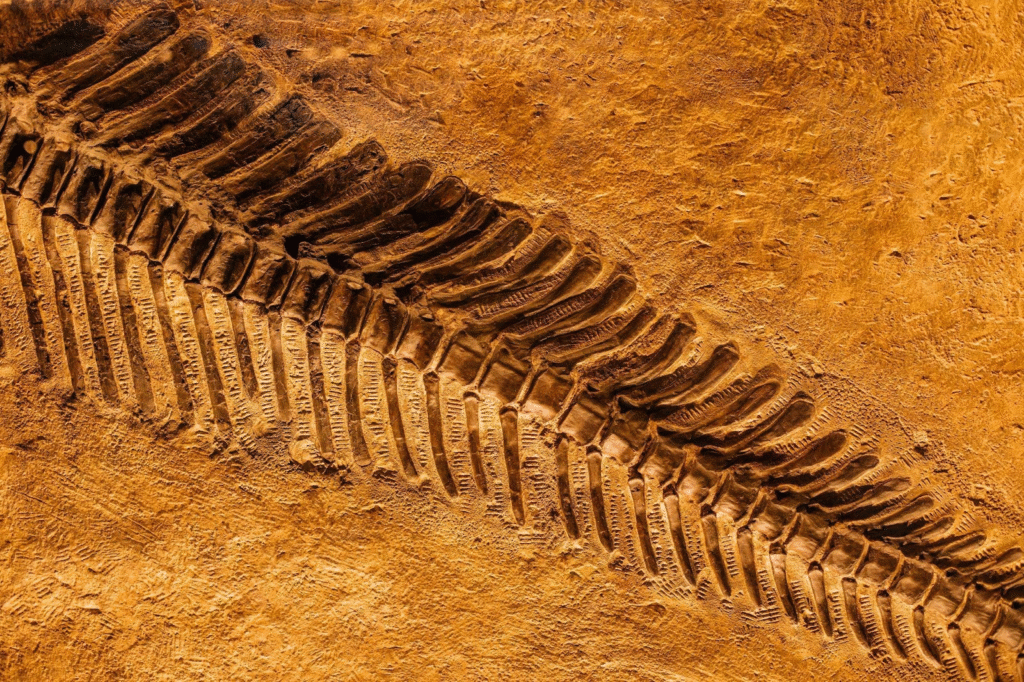
Example: Fossilized footprints of early humans or dinosaurs are the ideal example of trace fossils.
- Chemical Fossils:
Chemical fossils are also known as molecular fossils. These are distinct organic molecules, indicating past life’s presence.
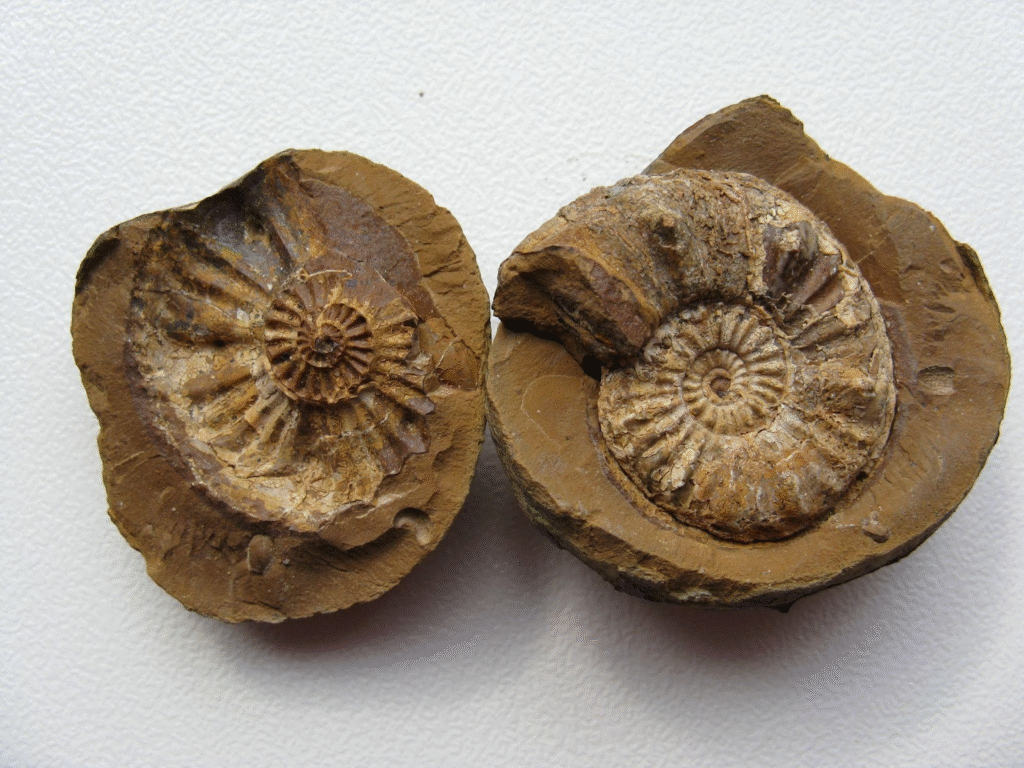
Example: Chemical fossils include coal, petroleum oil, and natural gas, and form the remains of once-living organisms containing carbon.
- Microfossil:
A microfossil can not be seen with the naked eye. Microscopes are required to study microscopic organisms, any fragmented part of larger life forms, teeth components, or spores.
Examples: Tiny invertebrate shells or skeletons, and even tiny bones and teeth from microfossils.
Famous Fossil Discoveries
Some famous fossil discoveries reveal the ancient life forms that provide important clues about life on Earth and a detailed history. By exploring these fascinating fossils, scientists gain a deeper knowledge of the incredible diversity and also get to know the processes that have formed the fossils over time.
- Archaeopteryx
Archaeopteryx was a species of feathered dinosaur that lived around 150 million years ago in the late Jurassic period. However, in 1861, the fossils of Archaeopteryx were first discovered in Germany and considered as one of the most vital fossils for the study of evolutionary biology. Scientists claim that Archaeopteryx is the first transitional form between dinosaurs and birds.
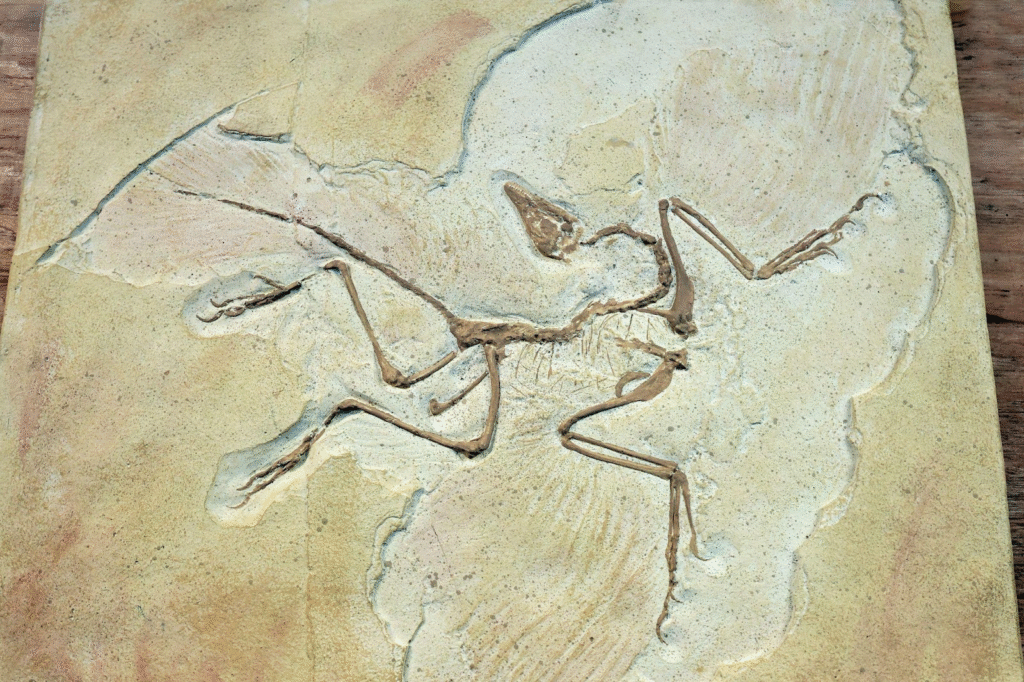
- Lucy
Lucy is the name that was given to the collection of fossilized bones. The bones actually belonged to the ancient hominid species called Australopithecus Afarensis. It is said that the species lived in East Africa approximately 3.2 million years ago. However, the species’ bones were discovered first in 1974 by a team of researchers led by paleoanthropologist Donald Johanson in Ethiopia’s Afar Depression. The bones not only provide valuable insights but also reveal the evolution of human ancestors.
- Dinosaur footprints
The footprints of dinosaurs rank among the most famous fossil discoveries, offering rare glimpses into prehistoric behavior, movement, and social patterns.
Examples –
- Chirotherium footprints (England, 1820s):
These first footprints of Dinosaurs are also listed as one of the most famous fossil discoveries. The nascent study of paleontology highly values the written records of dinosaur footprints.
- The UK’s Largest Dinosaur Trackway (Oxfordshire, UK):
This site, which was found in a limestone quarry, has over 200 footprints span 150 meters and provide insight into the behavior and habitat of the dinosaurs.
- World’s Longest Dinosaur Tracks (Plagne, France):
This discovery, which was made near the village of Plagne, was noteworthy because of the dinosaur’s extreme length and size —it is estimated to have been 35 meters long and 35 tons in weight.
Why Fossils are Important
How do fossils help scientists learn about the past? Well, fossils are essential because they allow us to understand the past of the Earth and its once-living creatures. Researchers who study fossils are called paleontologists, and with these studies, they reveal many explained and unexplored facts of the Earth.
Fossils give us insights into:
- The living world of the past: fossils help to document extinct animal and plant species.
- Climate and environmental conditions: For example, fossils of tropical plants in cool regions show that the climate was once warmer in that particular place.
- The history of the Earth: Fossils are formed into solid hard rocks, and these rock formations happen in chronological order, showing the date of the development of life.
Fossils vs. Fossil Fuels
As we are learning what are fossils, it is necessary to learn the clarification between biological fossils and fossil fuels to gather deeper insights.
| Features | Fossils | Fossil Fuel |
| Primary Definition | Preserved remains, traces, or impressions of ancient plants and animals. | Natural fuels like coal, oil, and natural gas formed from decayed plants and microorganisms. |
| Formation process | Created by mineralization, where organic material is buried and replaced by minerals over millions of years. | Formed when plant and microbial matter decomposes under heat and pressure in Earth’s crust over millions of years. |
| Uses | Studied by paleontologists to understand evolution, past climates, and extinct species. | Used as energy sources for electricity, heating, and fuel. |
| Scientific value | Provides clues to biodiversity, ancient ecosystems, and Earth’s history. | Fuels industrial growth but contributes to climate change when burned. |
| Common confusion that appears | Both involve ancient life and millions of years, leading people to mistakenly think fossils themselves are burned as fuel. | The term “fossil fuels” makes it sound like actual fossils are used for energy. |
Where are Fossils Found?
There are different geographic locations, such as deserts, rivers, mountains, and even badlands, where excellent fossil discoveries have been made. These locations are ideal due to high levels of erosion. However, according to ancient origins, studies of fossils reveal that they are formed in sedimentary rock around ancient bodies of water, such as rivers, swamps, or inland seas.
Due to a long period, the sandy banks and muddy swamps dried and hardened into stone, trapping the fossilized animals deep within.
Look at some top examples of the world’s leading fossil sites.
- Hell Creek Formation – USA – The United States features many great fossil sites, such as La Brea Tar Pits in California and the Morrison Formation in Arizona, but the Hell Creek Formation is one of the most prominent.
- Dinosaur Provincial Park – Canada – The Canadian Badlands, is one of the world’s most premier destinations for fossil discovery and dinosaur research. Dinosaur Provincial Park, a UNESCO World Heritage Site, is where almost 50 distinct dinosaur species and 500 individual specimens were discovered.
Moreover, China’s Liaoning Province, Argentina’s Anacleto Formation, and the Jurassic Coast in the United Kingdom are some of the most popular fossil discovery places recognized globally.
How Do Fossils Help Scientists Learn About the Past?
As we are reading about fossils, how do fossils help scientists learn about the past is a vital point that needs to be learned.
Fossils help scientists learn about the past by providing valid and direct evidence of different ancient forms of life and the environments, living conditions, and characteristics of ancient times. Thus, it shows the overall progression of species and the ideal process of evolution. Therefore, it allows geologists to determine the proper ages of rock layers and even helps to reconstruct Earth’s geological history.
Another best part about fossils is that they reveal past climates, how organisms adapted to their surroundings, and even show connections between now-changed continents.
Conclusion
Fossils are an invaluable part that reveals the past and explains the history and life on Earth. From dinosaur bones to prehistoric plants, fossils are the remains that help to understand the evolutionary processes, ancient ecosystems, and even the history of life. So, understanding what are fossils, different types of fossils, and how they are formed enriches both scientists and normal people in understanding how the world was a million years ago, connecting history and the present.
FAQs:
- What exactly counts as a fossil?
A fossil is a once-living organism from a past geological age. It is a preserved item of anything that remains, an impression, or even a trace, usually over 10,000 years old. However, a fossil can be anything. For example, actual body parts such as bones, teeth, shells, and even petrified wood, or even marks such as footprints or fossilized DNA, hair, or even droppings.
- How old does something need to be to be considered a fossil?
Anything that is more than or approximately 10,000 years old is considered a fossil by most paleontologists. While there is no strict and universal age limit, the 10,000-year mark is a significant benchmark that distinguishes fossilized preserved remains from other or more recent archaeological finds. The older, the oldest the fossil is, dating back billions of years.
- Are fossils always from dinosaurs?
No, fossils are not always from dinosaurs; rather, they are the remaining traces of any organism that was once alive. These include plants, ancient fish, insects, microscopic organisms, and mammals, not just the bones of the extinct reptiles. Though dinosaur fossils are popular, they only represent a tiny fraction of life that has been fossilized, but there are many more fossils to be explored.


